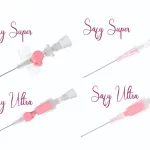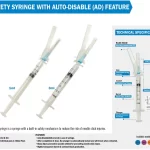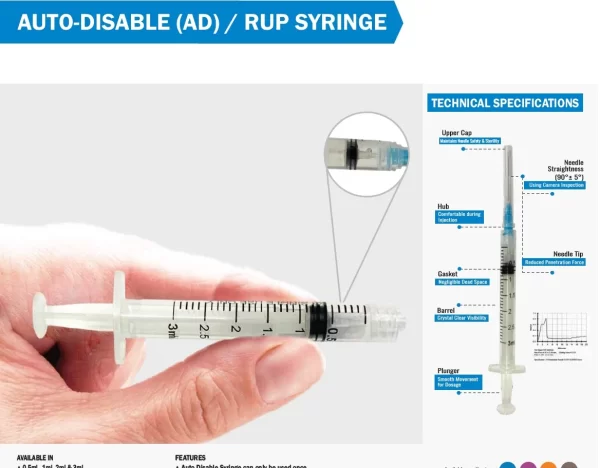Description
Auto-disable syringe mechanisms are designed to prevent the reuse of syringes. These mechanisms are primarily used in immunization campaigns, particularly in developing countries, to ensure the safe disposal of syringes and reduce the transmission of bloodborne diseases.
Auto-disable syringes typically have a built-in mechanism that activates after a single use. Once the plunger is fully depressed, the mechanism engages, preventing the syringe from being used again. This may involve breaking or jamming the plunger or the needle, rendering the syringe inoperable.
The purpose of auto-disable syringes is to discourage the reuse of syringes, which can lead to the spread of infections and diseases, such as HIV, hepatitis B, and hepatitis C. By automatically disabling the syringe, the risk of contaminated needles being used on multiple individuals is minimized.
These syringes are often used in mass vaccination campaigns, where large numbers of people need to be immunized quickly. After use, the auto-disable feature ensures that the syringes cannot be reused, promoting safe disposal practices.
It’s worth noting that the availability and use of auto-disable syringes can vary depending on the specific healthcare settings, regions, and initiatives.





